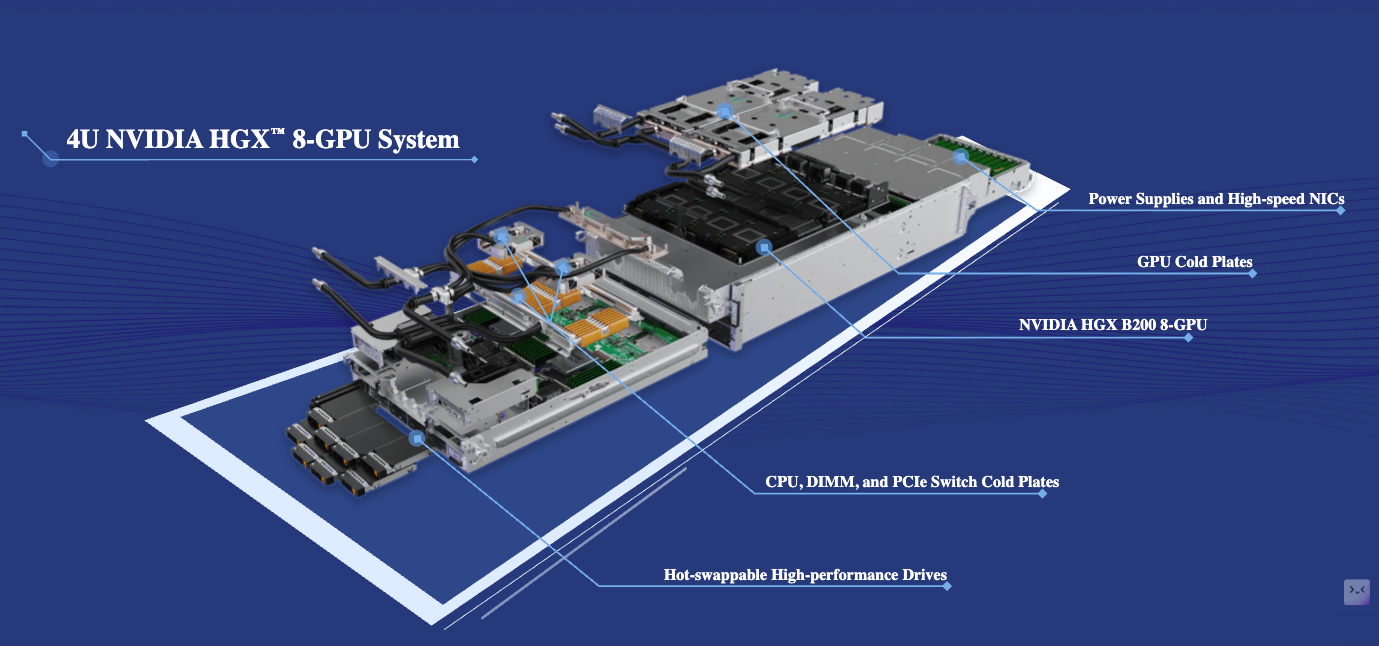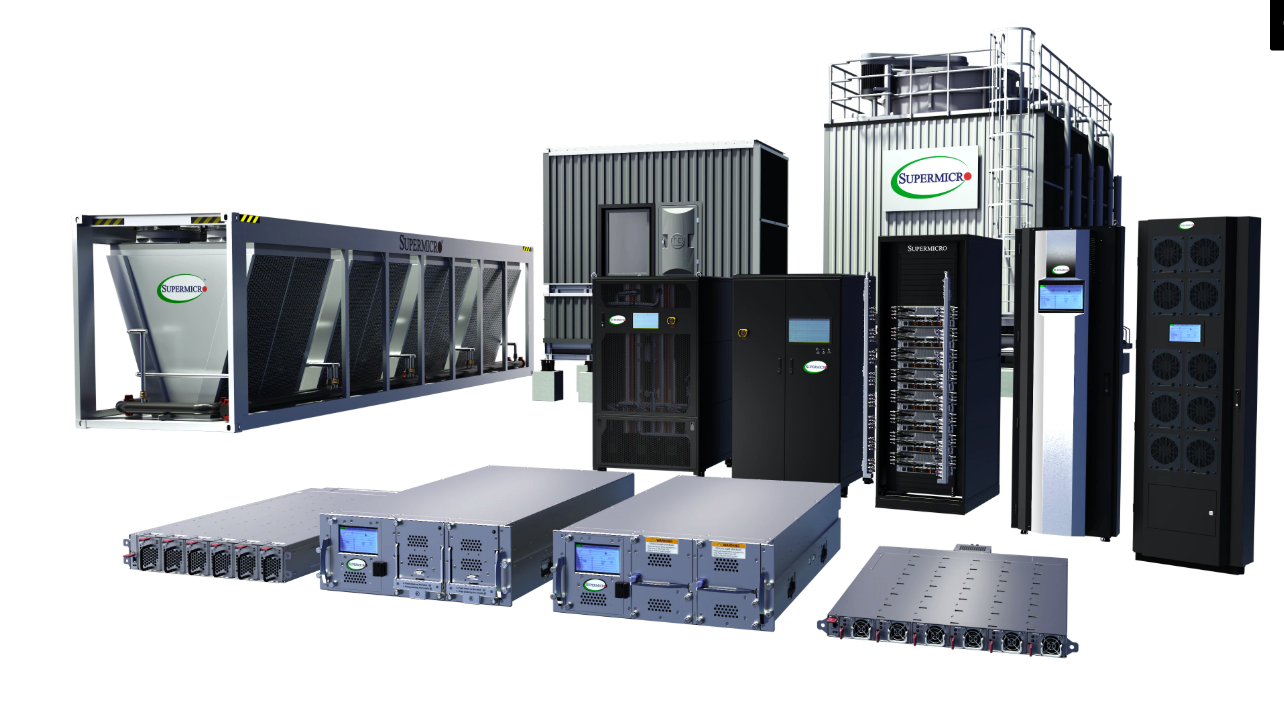Supermicro has launched a new business line, Data Center Building Block Solutions (DCBBS), which brings together the design, sourcing, and delivery of complete data centers with one vendor. This offering includes servers, storage, networking, management software, liquid cooling, and site infrastructure, all pre-tested and factory-integrated. Supermicro promotes DCBBS to shorten time-to-online, improve serviceability, and enhance overall build quality, with a special focus on energy efficiency and scalable liquid-cooling for AI workloads.

Supermicro CEO Charles Liang highlighted the company’s success with major operators and described DCBBS as a natural progression into full-stack infrastructure delivery. He pointed out the energy-efficient components, robust management software, and specialized liquid cooling designed for the latest high-performance GPUs and CPUs. Supermicro claims this technology can cut data center power use by up to 40% compared to conventional air cooling.
Integrated, Factory-Validated IT Stack
DCBBS provides an end-to-end solution from the rack to the row to the site. Supermicro integrates and tests servers, storage, fabric, liquid cooling, power, and management before shipment. This single-vendor approach simplifies procurement and deployment while reducing risks associated with multiple suppliers and integration efforts. Technically, the advantage lies in using a tested reference architecture that can be adjusted to site needs without reinventing the integration process.
Key DCBBS Components
AI and Compute Systems
Supermicro’s AI and compute systems feature density-optimized 1U and 2U platforms, multi-GPU training nodes, and scalable systems designed for efficiency and easy maintenance. These products use the latest accelerators and CPUs from NVIDIA, AMD, and Intel, allowing customers to select platforms that fit their workloads, from training large language models to high-performance computing, data analytics, and enterprise tasks.

For AI data workflows, Supermicro pairs computing power with petascale and object storage servers and collaborates with various software-defined networking partners to improve data flow and reduce training delays. Managing heat is crucial to their advantage; custom cold plates and liquid-cooling systems are designed to remove up to 98% of heat from components at the source, ensuring dependable performance under sustained loads while enabling higher rack densities without compromising reliability.
In-Rack Solutions
Supermicro’s in-rack cooling system focuses on modular coolant distribution. Coolant Distribution Manifolds (CDMs) and Coolant Distribution Units (CDUs) come in various configurations to accommodate different rack arrangements and power requirements. Vertical CDMs are designed to boost server density by improving coolant routing within a limited space. In-rack CDUs can support up to 250 kW of liquid cooling with coolant temperatures reaching 45 °C and include backup power supplies and pumps for reliability, meeting enterprise uptime goals.
Rear Door Heat Exchangers (RDHx) are mounted on the back of the rack to remove heat at the source, reducing the burden on facility-level CRAC/CRAH systems. This approach is particularly beneficial in existing setups where large-scale liquid retrofitting isn’t practical; operators can progressively incorporate higher-density equipment with little disruption.
Networking options feature Supermicro Ethernet switches with speeds up to 800 GbE per link and a total switching capacity of 51.2 Tbps. For customers with specific fabric needs, InfiniBand and Omni-Path switches from partner ecosystems are available. This range provides architects the flexibility to choose the right fabric based on the need for broad compatibility and evolving AI traffic management or for consistent performance in large-scale training.
Power delivery matches the demands of AI workloads. Supermicro power shelves are built for 33 kW per shelf across standard rack sizes, aligning with the power requirements of recent GPU-rich nodes. Battery Backup Unit (BBU) shelves offer 48V DC at 33 kW for 90 seconds, giving systems the time needed to checkpoint their state and avoid expensive application restarts during power interruptions. Racks are specially built for liquid-cooled servers and can be pre-integrated with power shelves and BBUs to ensure consistent mechanical, electrical, and thermal performance across deployments.
In-Row Solutions
For clusters surpassing the capacity of in-rack solutions, Supermicro in-row CDUs consolidate and manage liquid loops across multiple racks. These units can eliminate up to 1.8 MW of heat generated by servers and supply several high-powered, liquid-cooled racks from a central row-level plant. This design simplifies scaling: as workloads and densities increase, operators can add racks and extend the in-row loop without redesigning the entire cooling setup.
Liquid-to-Air (L2A) Sidecars offer an alternative for facilities lacking building-level liquid systems. These standalone units capture hot liquid from servers and release heat into the data hall air, cooling up to 200 kW per sidecar. Because they do not require external modifications, L2A Sidecars are ideal for phased retrofits, pilot projects, and tight colocation spaces.
At the multi-rack level, Supermicro SuperCluster provides plug-and-play components that merge computing, storage, and fabric in validated designs. Systems undergo L11/L12 testing before shipping, reducing integration risks and accelerating the transition from delivery to operational AI workloads. This method allows organizations to scale seamlessly from proof of concept to full production without redesigning racks, cabling, or fabric configurations.
Site Infrastructure Solutions
DCBBS encompasses the design and documentation of data center switching and cabling, including traffic engineering, routing, and port mapping, and cable length optimization. By finalizing these aspects beforehand and coordinating them with workload communication patterns, Supermicro looks to shorten time-to-online, cut material and labor costs, and enhance operability. The result is a reliable, efficient switching fabric suitable for distributed AI and analytical workloads, with a range that spans different application profiles.

For thermal management at facility scale, Supermicro offers modular water-cooling towers that can be quickly installed and aligned to increase capacity as clusters expand. In areas with limited water resources or where water conservation is essential, dry coolers serve as a low-PUE and low-WUE alternative. These units utilize adiabatic-assisted air pre-cooling to stay efficient in high-temperature conditions, ensuring steady performance throughout seasonal and geographic changes.
Power continuity is ensured with generator systems ranging from 500 kW to 3,000 kW, designed for quick start-ups, accommodating high-power fluctuations, and integrating smoothly with automatic transfer switches. Upstream power distribution uses flexible, low-impedance transformers from 750 kVA to 5,000 kVA, equipped with intelligent monitoring and loop-feed options that support resilient multi-megawatt blocks and prompt energization during phased buildouts.
Management Software Suite
SuperCloud Composer (SCC)
SCC serves as the control hub for rack-scale management over its lifecycle. It centralizes monitoring and control for servers, networking, PDUs, CDUs, and cooling towers while integrating with chosen third-party systems. SCC offers oversight, power management, and advanced leak detection, including protection and alerts to safeguard GPU and cooling systems. SCC can manage more than 20,000 hosts through a single portal, reducing tool fragmentation and standardizing operations across platforms.
SuperCloud Automation Center (SCAC)
SCAC provides ready-made, enterprise-level automation from firmware baselining and OS setup to Kubernetes integration and AI workload onboarding. The platform prioritizes security, scalability, and governance, allowing consistent cluster setups and repeatable configuration management. By using templates for common tasks, SCAC reduces the time from hardware arrival to application readiness.
SuperCloud Developer Experience Console (SCDX)
SCDX aims to boost developer efficiency while ensuring platform safety. It offers self-service access to computing and storage, AI-focused workflows for data preparation, training, and evaluation, and built-in monitoring. The goal is to help teams move from code to model more quickly while ensuring necessary safeguards for shared infrastructure and compliance.
SuperCloud Director (SCD)
SCD acts as a multi-tenant AI cloud control layer that spans bare-metal computing, Ethernet, and InfiniBand networks, and various storage backends. It is aimed at operators needing to deliver AI services at scale while managing administrative isolation, quota allocation, and lifecycle controls. By abstracting infrastructure details, SCD enables platform teams to provide uniform services to both internal departments and external clients.
Services and Onsite Deployment
Supermicro Global Services offers comprehensive engagement from bare-land construction to the transformation of air-to-liquid systems. Services include data center design, solution validation, onsite deployment, and ongoing support, with a 4-hour onsite response option for critical environments. The service model aims to reduce lead times by moving integration and testing to the factory, ensuring a predictable, documented installation on site. This leads to shorter time-to-online periods and higher-quality setups powered by efficient, repeatable delivery methods.
Bottom Line
DCBBS marks Supermicro’s transition from a server provider to a full-stack data center integrator, emphasizing liquid cooling, high-speed fabrics, and software-driven operations. For organizations expanding their AI and high-density compute capabilities, the offering provides a quicker path from purchase order to operational clusters, featuring validated building blocks that lower risk, enhance serviceability, and maintain energy efficiency at multi-megawatt scales.




 Amazon
Amazon